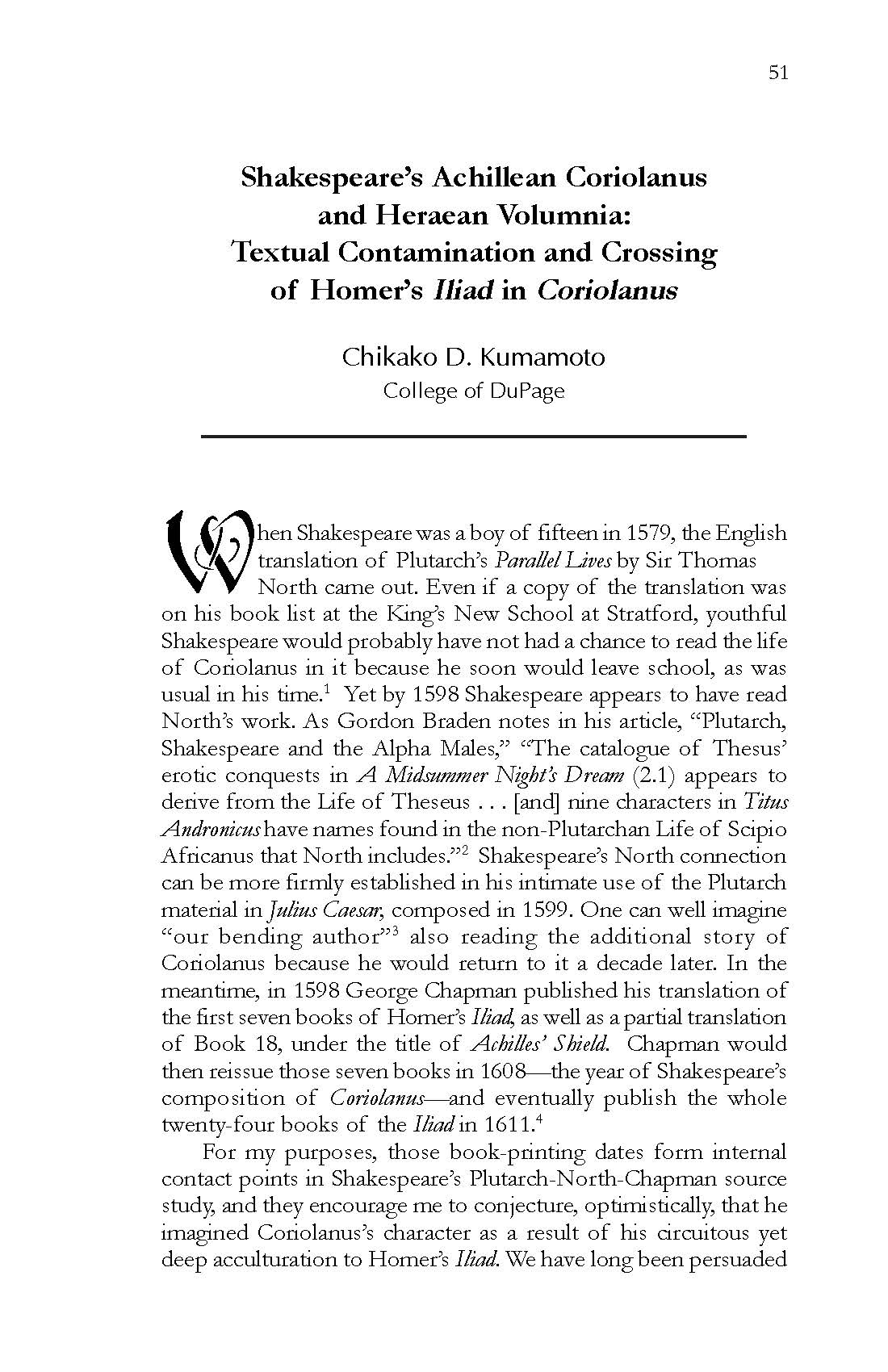Shakespeare’s Achillean Coriolanus and Heraean Volumnia: Textual Contamination and Crossing of Homer’s Iliad in Coriolanus
Main Article Content
Abstract
When Shakespeare was a boy of fifteen in 1579, the English translation of Plutarch’s Parallel Lives by Sir Thomas North came out. Even if a copy of the translation was on his book list at the King’s New School at Stratford, youthful Shakespeare would probably have not had a chance to read the life of Coriolanus in it because he soon would leave school, as was usual in his time.1 Yet by 1598 Shakespeare appears to have read North’s work. As Gordon Braden notes in his article, “Plutarch, Shakespeare and the Alpha Males,” “The catalogue of Thesus’ erotic conquests in A Midsummer Night’s Dream (2.1) appears to derive from the Life of Theseus . . . [and] nine characters in Titus Andronicus have names found in the non-Plutarchan Life of Scipio Africanus that North includes.”2 Shakespeare’s North connection can be more firmly established in his intimate use of the Plutarch material in Julius Caesar, composed in 1599. One can well imagine “our bending author”3 also reading the additional story of Coriolanus because he would return to it a decade later. In the meantime, in 1598 George Chapman published his translation of the first seven books of Homer’s Iliad, as well as a partial translation of Book 18, under the title of Achilles’ Shield. Chapman would then reissue those seven books in 1608—the year of Shakespeare’s composition of Coriolanus—and eventually publish the whole twenty-four books of the Iliad in 1611.4
